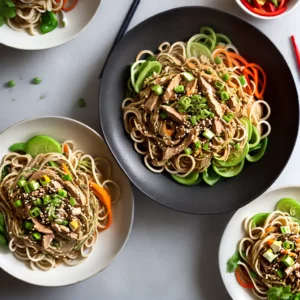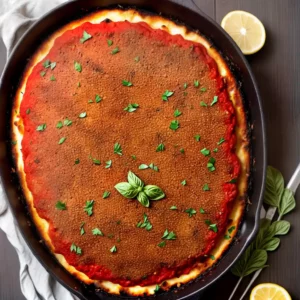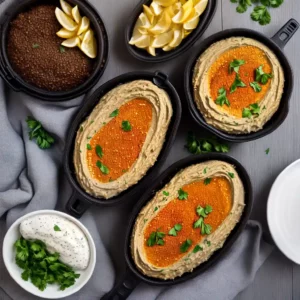Learning how to cut up a chicken breast is a fundamental skill that can elevate your cooking game. Whether you’re preparing a delicious chicken marsala, chicken schnitzel, or chicken Parmesan, knowing how to properly cut a chicken breast into thin cutlets is essential for quick and even cooking. In this article, I will guide you step by step on how to master the art of cutting up a chicken breast, ensuring that you have perfectly sliced pieces for your favorite recipes.
Key Takeaways:
- Cutting up chicken breasts allows for quicker and more even cooking
- Thinner chicken cutlets are ideal for searing or breading and frying
- Properly cut chicken breasts enhance flavor absorption when marinating or seasoning
- Use a sharp chef’s knife and a sturdy cutting board for best results
- Practice and learn from reliable resources to improve your chicken cutting skills
Why Learning to Cut Up Chicken Breasts is Important for Cooking
Learning how to cut up chicken breasts is a fundamental skill that plays a crucial role in cooking. It offers numerous benefits when it comes to meal preparation and enhances your kitchen skills. By mastering the art of cutting chicken breasts, you gain more control over your recipes, ensuring quicker and more even cooking.
Cutting chicken breasts allows for versatility in the kitchen, as you can create different shapes and sizes of chicken pieces for various cooking methods. Whether you’re slicing the breasts into thin cutlets, pounding them for even thickness, or cubing them for stews and soups, the possibilities are endless. This technique also aids in portion control and flavor distribution, as the smaller pieces allow marinades and seasonings to penetrate the meat more effectively.
Efficient meal preparation is another reason why learning to cut up chicken breasts is essential. By slicing and dicing the meat beforehand, you save valuable time during the cooking process. You can pre-portion the chicken and store it in the refrigerator or freezer for later use, making weeknight dinners a breeze. Additionally, having uniformly cut chicken breasts ensures even cooking, preventing overcooked or undercooked sections.
Key Benefits of Learning to Cut Up Chicken Breasts:
- Quicker and more even cooking
- Versatile shapes for various recipes
- Portion control and flavor absorption
- Efficient meal preparation
- Uniform cooking for consistent results
Essential Tools for Cutting Chicken Breasts
When it comes to cutting chicken breasts, having the right tools is essential for efficiency and precision. Here are the key tools you’ll need:
- Chef’s Knife: The chef’s knife is the go-to tool for cutting chicken breasts. Choose a sharp knife with a blade length of 8 to 10 inches. A sharp knife ensures clean cuts and reduces the risk of accidents.
- Cutting Board: Use a sturdy cutting board to provide a stable surface for cutting chicken breasts. A plastic cutting board is recommended as it is easier to disinfect and prevents cross-contamination.
With these tools, you’ll be well-equipped to handle chicken breasts and make precise cuts for various recipes.
“A sharp knife and a sturdy cutting board are the foundation of efficient chicken breast cutting.”
Proper tools not only make the cutting process easier but also contribute to kitchen safety and hygiene. Always ensure that your knife is sharp and your cutting board is clean before starting to cut chicken breasts. A dull knife can slip and cause injuries, while a clean cutting board prevents cross-contamination.
How to Split a Chicken Breast
Splitting a chicken breast is a fundamental technique that allows for more versatile cooking options. Whether you want to create thin cutlets, stuff the breast, or simply adjust portion sizes, knowing how to split a chicken breast is a valuable skill in the kitchen. In this section, I will guide you through the step-by-step process of splitting a chicken breast.
Gather your tools
Before you begin, make sure you have a boneless, skinless chicken breast, a sharp chef’s, boning, or fillet knife, and a sturdy cutting board. Having the right tools will ensure clean cuts and a safer cutting process.
The splitting technique
Start by placing the chicken breast on the cutting board with the smooth side facing down. To maintain stability, use the palm of your non-knife hand to hold the chicken breast flat. With your knife in hand, slice horizontally through the chicken breast, starting from one side and moving towards the opposite end. Keep your strokes smooth and try to complete the cut in as few motions as possible to maintain an even appearance. You now have two evenly split chicken breast pieces ready for your chosen recipe.
Practice makes perfect
As with any culinary skill, practice is key to mastering the art of splitting chicken breasts. It may take a few tries before you feel comfortable and confident in your technique, but with perseverance, you’ll quickly become proficient.
| Benefits of Splitting Chicken Breasts | Tips for Splitting Chicken Breasts |
|---|---|
| Allows for more cooking options and versatility | Use a sharp knife for clean cuts |
| Adjust portion sizes according to your needs | Hold the chicken breast firmly with your non-knife hand |
| Easier to stuff the breasts with desired fillings | Slice horizontally in one smooth motion |
| Avoid overcooking thick chicken breasts | Practice and refine your technique |
Now that you know how to split a chicken breast, you can confidently explore a wide range of recipes and cooking methods. From crispy breaded cutlets to succulent stuffed breasts, the possibilities are endless. So grab your knife and cutting board, and let’s get cooking!
Tips for Pounding Chicken Breasts
When it comes to achieving even thickness and tenderizing chicken breasts, the technique of pounding can make all the difference. Pounding helps to flatten the meat and break down its fibers, resulting in more uniform cooking and a tender final dish. Here are some helpful tips for pounding chicken breasts:
- Use a meat pounder or skillet: To pound the chicken breasts, place them between sheets of plastic or parchment paper to prevent sticking, and then gently pound them with a meat pounder or the bottom of a sturdy skillet. This helps to achieve an even thickness of about 1/4 inch.
- Pound with gentle motions: Avoid pounding the chicken too aggressively, as this can create holes in the meat and cause it to tear. Instead, use gentle lateral motions to evenly flatten the chicken breasts.
- Start from the center: Begin pounding from the center of the chicken breast and work your way outward. This will help to distribute the pressure evenly and prevent the meat from becoming too thin at the edges.
By following these tips, you can ensure that your chicken breasts are evenly pounded and ready to be cooked to perfection. Whether you’re preparing chicken piccata, schnitzel, or any other recipe that calls for pounded chicken breasts, these tips will help you achieve the desired results.
Benefits of Pounding Chicken Breasts
Pounding chicken breasts offers several benefits that can enhance your cooking experience:
- Even cooking: Pounded chicken breasts cook more evenly due to their uniform thickness. This eliminates the risk of overcooking or undercooking certain sections, resulting in a perfectly cooked dish.
- Tenderizing: The process of pounding breaks down the muscle fibers in the meat, resulting in a more tender and succulent texture. This is especially beneficial for lean cuts of chicken breasts that tend to be less tender.
- Enhanced flavor absorption: By pounding the chicken breasts, you create more surface area for marinades, seasonings, and sauces to penetrate. This allows for better flavor absorption and results in a more flavorful final dish.
Overall, pounding chicken breasts is a simple yet effective technique that can elevate your culinary skills. Whether you’re a novice cook or a seasoned chef, mastering the art of pounding will open up a world of delicious possibilities in your kitchen.
Slicing Chicken Breasts into Strips
When it comes to preparing chicken for dishes like stir-fries, fajitas, or chicken fingers, slicing chicken breasts into strips is the way to go. This technique creates thin, elongated pieces of chicken that cook quickly and evenly, making them perfect for these types of recipes. To get started, you’ll need a sharp knife, a plastic cutting board, and some paper towels.
Start by patting the chicken breasts dry with a paper towel to remove any excess moisture. This will ensure that the chicken slices evenly and prevent them from sticking together. Then, place the chicken breasts on a plastic cutting board and hold them firmly with one hand. Using a sharp knife, slice the chicken breasts against the grain into the specified or desired thickness for your recipe.
Slicing the chicken breasts against the grain is important because it helps to break down the muscle fibers, resulting in a more tender and enjoyable texture. It also makes the chicken easier to chew and digest. Once you’ve sliced the chicken breasts into strips, you’re ready to start cooking your delicious recipe!
Benefits of Slicing Chicken Breasts into Strips
- Quick and even cooking: Slicing the chicken breasts into thin strips ensures that they cook quickly and evenly, saving you time in the kitchen.
- Tender and flavorful: The smaller size of the chicken strips allows for better flavor absorption when marinating or seasoning, resulting in a more delicious dish.
- Versatility in cooking methods: Sliced chicken breasts can be used in a wide range of recipes, from stir-fries and fajitas to salads and wraps, making them a versatile ingredient to have on hand.
“Slicing chicken breasts into strips is a great way to add variety and texture to your recipes. Whether you’re making a stir-fry, a salad, or a wrap, sliced chicken breasts provide a tasty and nutritious protein option. Plus, they cook up quickly, making them an excellent choice for busy weeknight dinners.” – Chef Amy
| Recipe | Slicing Thickness | Cooking Time |
|---|---|---|
| Chicken Stir-Fry | 1/4 inch | 5-7 minutes |
| Chicken Fajitas | 1/4 inch | 8-10 minutes |
| Chicken Caesar Salad | 1/4 inch | No cooking required |
Cubing Chicken Breasts for Versatility
Cubing chicken breasts is a technique that offers versatility in cooking and opens up a world of possibilities for creating delicious recipes. By cutting chicken breasts into small, cube-shaped pieces, you can achieve more even cooking and consistent flavor distribution throughout your dishes. Whether you’re making salads, pasta dishes, stews, or soups, cubed chicken breasts add a flavorful and protein-packed element to your meals.
To cube chicken breasts, start by slicing them into strips. Pat the chicken breasts dry with a paper towel to remove excess moisture, as this helps with browning and texture. Place the chicken breasts on a plastic cutting board and hold them firmly. Use a sharp knife to slice the chicken breasts against the grain into the specified or desired thickness. The size of the cubes can vary depending on the recipe, but aim for cubes that are roughly 1 inch in size.
| Benefits of Cubed Chicken Breasts | Recipes |
|---|---|
|
|
The cubing technique allows the chicken to cook evenly, ensuring each piece is tender and juicy. It’s a great method to use when you want to incorporate chicken into dishes with shorter cooking times, as the smaller cubes cook more quickly. Plus, the uniform shape of the cubes lends itself well to various cooking methods, from stir-frying to braising.
When using cubed chicken breasts in recipes, keep in mind that they may require less cooking time than larger chicken pieces. Make sure to adjust the cooking time accordingly and monitor the internal temperature to ensure the chicken is fully cooked. With cubed chicken breasts, you can elevate your culinary creations and enjoy the benefits of perfectly cooked chicken in every bite.
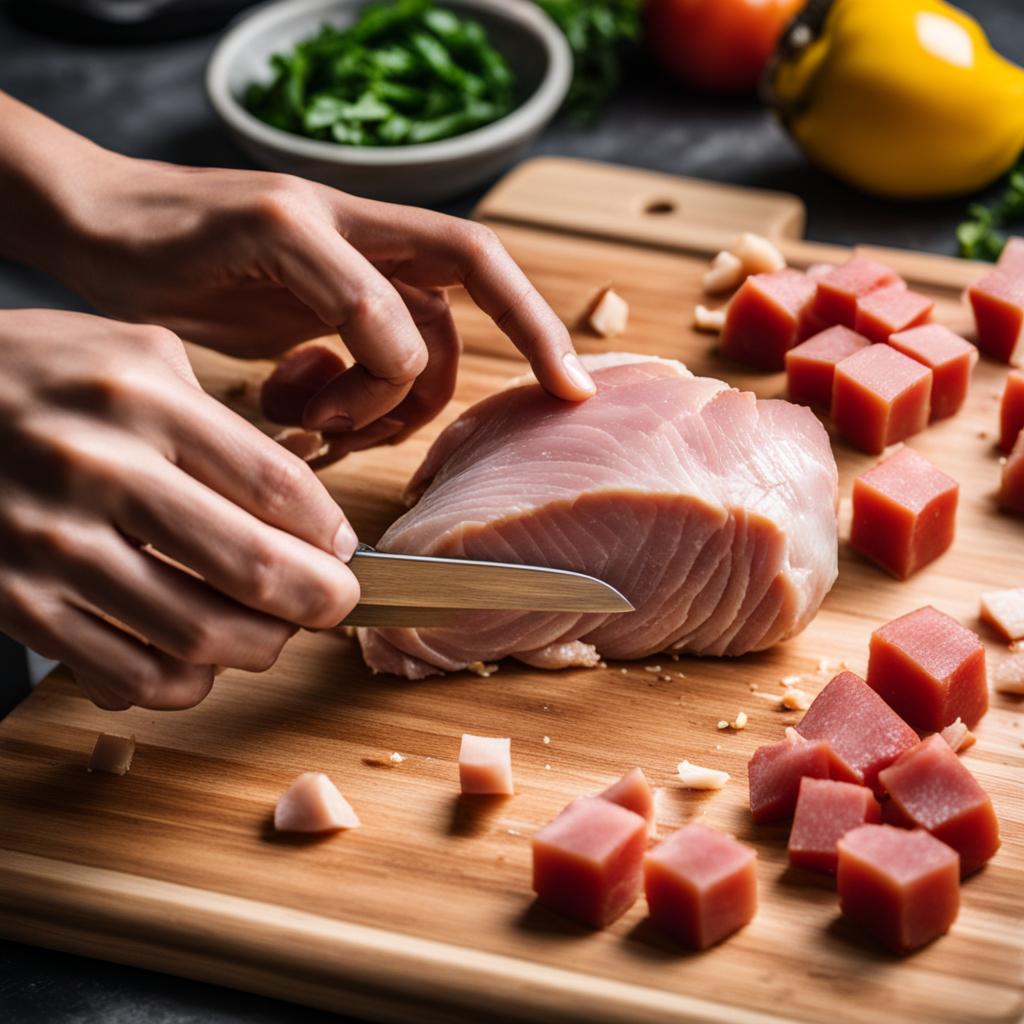
Techniques for Butterflying Chicken Breasts
Butterflying chicken breasts is a versatile technique that allows for easy stuffing and quicker cooking times. To butterfly a chicken breast, follow these simple steps:
- Place the chicken breast on a cutting board, smooth side down.
- Hold the breast firmly with one hand and, using a sharp knife, make a horizontal cut through the thickest part of the breast, stopping about a half-inch from the edge.
- Open up the chicken breast like a book, keeping it intact on one side.
- To flatten the butterflied breast, cover it with plastic wrap and gently pound it with a meat mallet or the bottom of a skillet.
By butterflying chicken breasts, you create a larger surface area for stuffing, such as cheese, vegetables, or herbs, enhancing the flavors of the dish. Additionally, butterflied chicken breasts cook more evenly as they have a consistent thickness throughout. The shorter cooking time prevents the meat from drying out, resulting in tender and juicy chicken.
“Butterflying chicken breasts allows for endless possibilities when it comes to stuffing. You can get creative with different ingredients and flavor combinations, making each dish unique and delicious.” – Chef Johnson
When cooking butterflied chicken breasts, be mindful of the reduced cooking time. The thinner cut requires less time to reach the desired internal temperature. Use a meat thermometer to ensure the chicken is fully cooked, registering at least 165°F (74°C). Overcooking can lead to dry and tough meat, so keep a close eye on the cooking process.
| Stuffing Ideas for Butterflied Chicken Breasts | Cooking Time (Approx.) |
|---|---|
| Cheese and Spinach | 20 minutes |
| Sundried Tomato and Basil | 18 minutes |
| Ham and Swiss | 22 minutes |
Experiment with different stuffing combinations to create a variety of flavors. The table above provides a guideline for approximate cooking times for popular stuffing options. However, individual cooking times may vary depending on the size and thickness of the butterflied chicken breasts, so it’s important to monitor the internal temperature throughout the cooking process.
Now that you’ve learned how to butterfly chicken breasts, you can incorporate this technique into your cooking repertoire and impress your dinner guests with flavorful and beautifully stuffed chicken dishes.
Proper Knife and Cutting Safety
When it comes to cutting chicken breasts or any other ingredients, safety should always be a top priority. Here are some important tips to follow for proper knife and cutting safety in the kitchen:
- Use a sharp knife: A sharp knife not only makes cutting easier but also reduces the risk of accidents. Dull knives can slip and cause injuries, so it’s essential to keep your knives sharp. Regularly sharpen your knives or seek professional sharpening services to maintain their sharpness.
- Choose the right knife for the task: Different knives are designed for specific tasks. When cutting chicken breasts, a chef’s knife is typically the best choice. Its broad blade and sharp edge allow for precise cuts. However, if you prefer a smaller knife like a boning or fillet knife, ensure it’s suitable for cutting poultry.
- Practice proper grip and technique: Hold the knife firmly with your dominant hand, gripping the handle securely. Position your other hand on the item you’re cutting, using a claw-like grip to protect your fingers. Always keep your fingers away from the path of the blade to avoid accidental cuts.
- Use a stable cutting board: A stable cutting surface is crucial for safe and efficient cutting. Choose a cutting board that won’t slip or slide during use. Opt for a board made of materials like plastic or wood, which are easier to clean and disinfect.
“A sharp knife is not only safer to use but also makes your cutting tasks more enjoyable and efficient.” – Chef John Doe
Remember to always exercise caution and focus when handling sharp knives. Proper knife and cutting safety practices can help prevent accidents, making your culinary experiences safer and more enjoyable.
| Knife Safety Tips | Cutting Board Hygiene | Kitchen Safety Measures |
|---|---|---|
| Use a sharp knife for clean cuts. | Choose a stable cutting board. | Keep your knives out of reach of children. |
| Hold the knife securely with a proper grip. | Regularly clean and sanitize your cutting board. | Be mindful of other kitchen hazards, such as hot surfaces and open flames. |
| Keep your fingers away from the blade path. | Use separate cutting boards for raw and cooked foods. | Store knives in a knife block or sheath to protect the blades and prevent accidents. |
Cooking Tips for Perfectly Cut Chicken Breasts
When it comes to cooking chicken breasts, how you cut them can greatly impact the final result. Cutting chicken into uniform shapes and thickness ensures even cooking, making each bite tender and juicy. Here are some essential cooking tips for perfectly cut chicken breasts:
1. Opt for uniformity
When cutting chicken breasts, aim for uniform shapes and thickness. Thicker parts of the breasts take longer to cook than thinner parts, resulting in unevenly cooked meat. By ensuring uniformity, you can avoid dry, overcooked sections and undercooked spots.
| Tip | Why |
|---|---|
| Slice chicken breasts against the grain | Prevents toughness and enhances tenderness |
| Use a meat thermometer | Ensures chicken reaches the proper internal temperature |
| Follow recipe instructions or adjust cooking times | Allows for precise cooking based on the size of the cut chicken |
2. Keep the moisture locked in
Properly cut chicken breasts help retain moisture, resulting in succulent, flavorful meat. When marinating or seasoning the chicken, the surface area of each piece plays a crucial role in flavor absorption. Consistently cut chicken breasts ensure an equal distribution of flavors throughout the meat.
3. Give it some love during cooking
While cooking, pay attention to the heat and cooking time. Chicken breasts that are cut to the same size will cook at a consistent rate. This allows you to achieve a perfectly cooked, juicy chicken breast that is not overcooked or dry. Adjust your cooking technique as needed to bring out the best flavors and textures.
By following these cooking tips for perfectly cut chicken breasts, you can elevate your culinary skills and create delicious, mouthwatering dishes every time. Remember, precision in cutting leads to precision in cooking.

Knife Selection Guide for Cutting Chicken
When it comes to cutting chicken, selecting the right knife is crucial for achieving precise and clean cuts. A sharp and reliable chef’s knife is the go-to choice for most home cooks. This versatile knife is well-suited for a wide range of tasks, including cutting chicken breasts. Look for a chef’s knife with a smooth blade that is 8 to 10 inches in length. The longer blade allows for longer strokes and easier slicing, while the smooth edge ensures clean cuts without tearing the meat.
While a chef’s knife is the most commonly used knife for cutting chicken, other types of knives can also be handy depending on personal preference. Boning knives, with their narrow and flexible blades, are great for removing bones from chicken breasts. Fillet knives, with their thin and tapered blades, are ideal for precise and delicate tasks like deboning or trimming. Experiment with different knife types to find the one that feels comfortable in your hand and allows for precise cuts.
When it comes to knife size, an 8 to 10-inch blade is generally recommended for cutting chicken breasts. This size strikes a balance between maneuverability and effectiveness. A smaller knife may restrict your movement, while a larger knife may feel cumbersome and make it harder to control. Ultimately, the right knife size depends on your comfort and confidence in handling it. Choose a knife that feels balanced and allows you to make controlled cuts with ease.
Summary:
- A chef’s knife is the ideal choice for cutting chicken breasts, offering versatility and ease of use.
- Look for a chef’s knife with a smooth blade that is 8 to 10 inches in length for optimal performance.
- Boning knives and fillet knives can also be useful for specific tasks like deboning or trimming.
- When choosing a knife size, consider one with an 8 to 10-inch blade for a balanced and manageable experience.
| Knife Type | Blade Description | Recommended Length |
|---|---|---|
| Chef’s Knife | Smooth edge, versatile | 8 to 10 inches |
| Boning Knife | Narrow and flexible | 6 to 8 inches |
| Fillet Knife | Thin and tapered | 6 to 8 inches |
Proper Handling and Precautions when Cutting Chicken
When it comes to cutting chicken, kitchen hygiene and food safety are of utmost importance. Handling raw chicken requires careful attention and proper precautions to prevent cross-contamination and ensure the health and well-being of those enjoying the meal. Here are some essential tips to keep in mind:
1. Clean Hands and Surfaces
Before starting to cut chicken, always wash your hands thoroughly with hot, soapy water. This helps remove any bacteria or germs that may be present on your hands. Additionally, make sure your cutting board and any utensils you use are also clean and sanitized. It’s a good practice to have separate cutting boards designated specifically for raw meat to avoid cross-contamination.
2. Pat Dry and Dispose of Paper Towels
Prior to cutting the chicken, use a paper towel to pat the chicken breasts dry. This not only helps remove excess moisture but also reduces any potential slipperiness while handling the meat. After using the paper towel, dispose of it properly in a trash bin to prevent any germs from spreading.
3. Clean Up Immediately
Once you have finished cutting the chicken, it’s essential to clean up any potential mess right away. Wash your hands, knife, cutting board, and any other surfaces that came into contact with the raw chicken with hot, soapy water. This helps eliminate any harmful bacteria and prevents the risk of cross-contamination in your kitchen.
By following these simple but crucial precautions, you can ensure the safety and hygiene of your kitchen while cutting chicken. Remember, proper handling and cleanliness are key to enjoying delicious and healthy meals with your loved ones.
Avoiding Common Mistakes when Cutting Chicken
When it comes to cutting chicken, there are a few common mistakes that can easily be avoided. One of the most common errors is pounding the chicken too hard, which can result in holes in the meat. It’s important to use a gentle touch when pounding chicken breasts to ensure they remain intact and tender.
Another mistake to watch out for is not cutting against the grain. Cutting against the grain can make the meat tougher and less enjoyable to eat. To achieve the best texture and tenderness, always cut chicken breasts against the grain, which means slicing perpendicular to the muscle fibers.
Lastly, using a dull knife is a recipe for disaster. A sharp knife is essential for clean, precise cuts and reduces the risk of accidents. Make sure to regularly sharpen your knife to maintain its sharpness and effectiveness when cutting chicken.
By avoiding these common mistakes and following proper techniques, you can ensure that your chicken cutting endeavors are successful and yield delicious results.
Common Mistakes to Avoid when Cutting Chicken:
- Pounding the chicken too hard, which can create holes in the meat.
- Not cutting against the grain, resulting in tougher meat.
- Using a dull knife, which can lead to accidents and less precise cuts.
Tips for Perfect Chicken Cutting:
- Use a gentle touch when pounding chicken breasts to prevent holes.
- Always cut against the grain for tender meat.
- Keep your knife sharp for clean and precise cuts.
“To achieve perfectly cut chicken, it’s crucial to avoid common mistakes such as pounding too hard or cutting against the grain. With proper technique and a sharp knife, you’ll be on your way to expertly cut chicken for your favorite recipes.” – Cooking Enthusiast
Practice and Learn from Resources
Mastering the art of cutting up chicken breasts takes practice. It’s a skill that can be honed over time, and there are plenty of resources available to help you perfect your technique. Whether you prefer online tutorials, cooking classes, or traditional cookbooks, these learning resources can provide valuable tips and insights to enhance your chicken cutting skills.
Online tutorials are a convenient and accessible way to learn. There are many cooking websites and YouTube channels that offer step-by-step guides on cutting chicken breasts. These tutorials often include demonstrations and practical tips from experienced chefs, allowing you to learn at your own pace and revisit the content whenever you need a refresher.
If you prefer a more hands-on approach, attending cooking classes can be a great option. Many culinary schools and community centers offer classes specifically focused on knife skills and butchery techniques. These classes provide the opportunity to learn directly from a chef instructor, who can offer personalized guidance and feedback to help you improve.
Cookbooks are another valuable resource for learning how to cut up chicken breasts. Look for cookbooks that emphasize fundamental cooking techniques and include detailed instructions and illustrations. These books often provide additional information on proper knife handling and safety precautions, ensuring you have a solid foundation for your chicken cutting endeavors.
Learning Resources for Cutting Chicken Breasts
| Resource | Description |
|---|---|
| Online Tutorials | A wide range of websites and YouTube channels offer instructional videos on cutting chicken breasts. These tutorials provide visual demonstrations and helpful tips from professional chefs. |
| Cooking Classes | Attending cooking classes focused on knife skills and butchery techniques can provide hands-on learning experiences. Instructors can offer personalized guidance and tips for cutting chicken breasts. |
| Cookbooks | Look for cookbooks that include detailed instructions, illustrations, and tips for cutting chicken breasts. These resources can provide a solid foundation in chicken cutting techniques. |
“Practice makes perfect. The more you cut up chicken breasts, the more comfortable and skilled you’ll become!”
Remember, practice is key when it comes to mastering any culinary skill. Start with simple recipes that require cutting chicken breasts into basic shapes, such as strips or cubes. As you gain confidence, you can challenge yourself with more complex techniques like butterflying or pounding. Don’t be discouraged by initial setbacks or mistakes – every chef starts somewhere, and with dedication, you’ll see improvement over time.
So, grab your chef’s knife, put on your apron, and dive into the world of cutting up chicken breasts. Explore different learning resources, experiment with various techniques, and most importantly, enjoy the process of becoming a skilled chicken cutter. Happy cooking!
Conclusion
As an expert chef, mastering chicken breast cutting techniques is essential in elevating your culinary skills. Through proper tools, techniques, and practice, you can confidently navigate the art of cutting up chicken breasts for various recipes.
By honing your skills, you’ll be able to create versatile chicken cutlets, thin slices, and even cubes, offering endless possibilities for meal preparation. Not only does this enhance the flavor absorption and cooking time, but it also allows for portion control and consistent flavor distribution.
Remember, practice makes perfect. Take advantage of learning resources, such as cooking tutorials and recipe guides, to further improve your technique. With dedication and a passion for cooking, you’ll become a master in cutting up chicken breasts, unlocking a world of culinary creativity in your own kitchen.
FAQ
Why is learning how to cut up chicken breasts important for cooking?
Cutting up chicken breasts allows for quicker and more even cooking, making it an essential skill for efficient meal preparation. It also helps in portion control and allows for better flavor absorption when marinating or seasoning the chicken.
What tools do I need to cut chicken breasts?
You will need a sharp chef’s knife, preferably 8 to 10 inches in length, and a sturdy cutting board. It’s important to use a sharp knife to ensure clean cuts and reduce the risk of injury. A plastic cutting board is recommended as it is easier to disinfect and prevents cross-contamination.
How do I split a chicken breast?
Place a boneless, skinless chicken breast on a cutting board. Hold it flat with the palm of your non-knife hand. Using a sharp chef’s, boning, or fillet knife, slice the chicken breast horizontally into two even pieces. Try to do this in as few strokes as possible to maintain a smooth appearance.
What are some tips for pounding chicken breasts?
To pound chicken breasts, sandwich the chicken breast slices between sheets of plastic or parchment paper. Use a meat pounder or the bottom of a sturdy skillet to gently pound the chicken. Move the pan or pounder in slight lateral motions to achieve an even thickness of about 1/4 inch. Avoid pounding too hard to prevent holes in the meat.
How do I slice chicken breasts into strips?
Pat the chicken breasts dry with a paper towel to remove excess moisture. Place the chicken breasts on a plastic cutting board and hold them firmly. Use a sharp knife to slice the chicken breasts against the grain into the specified or desired thickness. This technique is useful for recipes like stir-fries, fajitas, or chicken fingers.
How do I cube chicken breasts?
Cubing chicken breasts involves slicing them into strips first, then cutting the strips into smaller, cube-shaped pieces. The size of the cubes can vary depending on the recipe. Cubed chicken breasts are versatile and can be used in salads, pasta dishes, stews, or soups. This method allows for more even cooking and consistent flavor distribution.
How do I butterfly chicken breasts?
Butterflying chicken breasts involves cutting them in half almost all the way through, leaving them intact on one side. This technique is perfect for stuffing the chicken breasts with various fillings. It also reduces the cooking time and allows for a golden-brown sear on both sides. Butterflied chicken breasts cook more evenly and retain moisture.
How can I ensure knife and cutting safety when handling chicken?
When cutting chicken breasts or any other ingredients, it’s important to use a sharp knife to ensure clean cuts. Dull knives can slip and cause injuries. Always use a cutting board to provide a stable surface and prevent contamination. It’s crucial to wash your hands, knife, and cutting board thoroughly with hot, soapy water after handling raw chicken.
What are some common mistakes to avoid when cutting chicken?
One common mistake when cutting chicken is pounding too hard, which can result in holes in the meat. Another mistake is not cutting against the grain, which can make the meat tougher. It’s also important to ensure the knife is sharp to prevent accidents. Following proper techniques and taking precautions can help avoid these common mistakes.
How can I improve my chicken cutting skills?
Cutting chicken breasts may take some practice to achieve desired results. It’s essential to keep practicing and learn from reliable resources, such as cooking tutorials and recipe guides. Online resources, cookbooks, and cooking classes can provide valuable tips and techniques to improve your chicken cutting skills. With practice and knowledge, you can become an expert at cutting up chicken breasts.
Source Links
- https://onehotoven.com/how-to-cut-chicken-breasts/
- https://www.seriouseats.com/knife-skills-how-to-cut-chicken-breasts-into-cutlets
- https://www.laurafuentes.com/cut-chicken-breasts/
Related Recipes:
 How to Cut a Tomato? (Perfect Step-By-Step Guide)
How to Cut a Tomato? (Perfect Step-By-Step Guide)
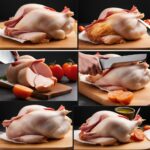 How to Cut a Whole Chicken: Tips and Tricks
How to Cut a Whole Chicken: Tips and Tricks
 Cleaning Plastic Cutting Boards: Tips and Tricks
Cleaning Plastic Cutting Boards: Tips and Tricks
 How to Cut a Tomato: Techniques for Every Dish
How to Cut a Tomato: Techniques for Every Dish
 How to Cut Broccoli: A Quick Guide
How to Cut Broccoli: A Quick Guide
 How to Cut a Watermelon? (Perfect Step-By-Step Guide)
How to Cut a Watermelon? (Perfect Step-By-Step Guide)
 How to Cut Carrots? (Perfect Step-By-Step Guide)
How to Cut Carrots? (Perfect Step-By-Step Guide)
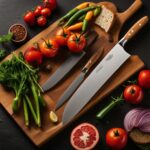 Essential Kitchen Knives for Every Beginner
Essential Kitchen Knives for Every Beginner


